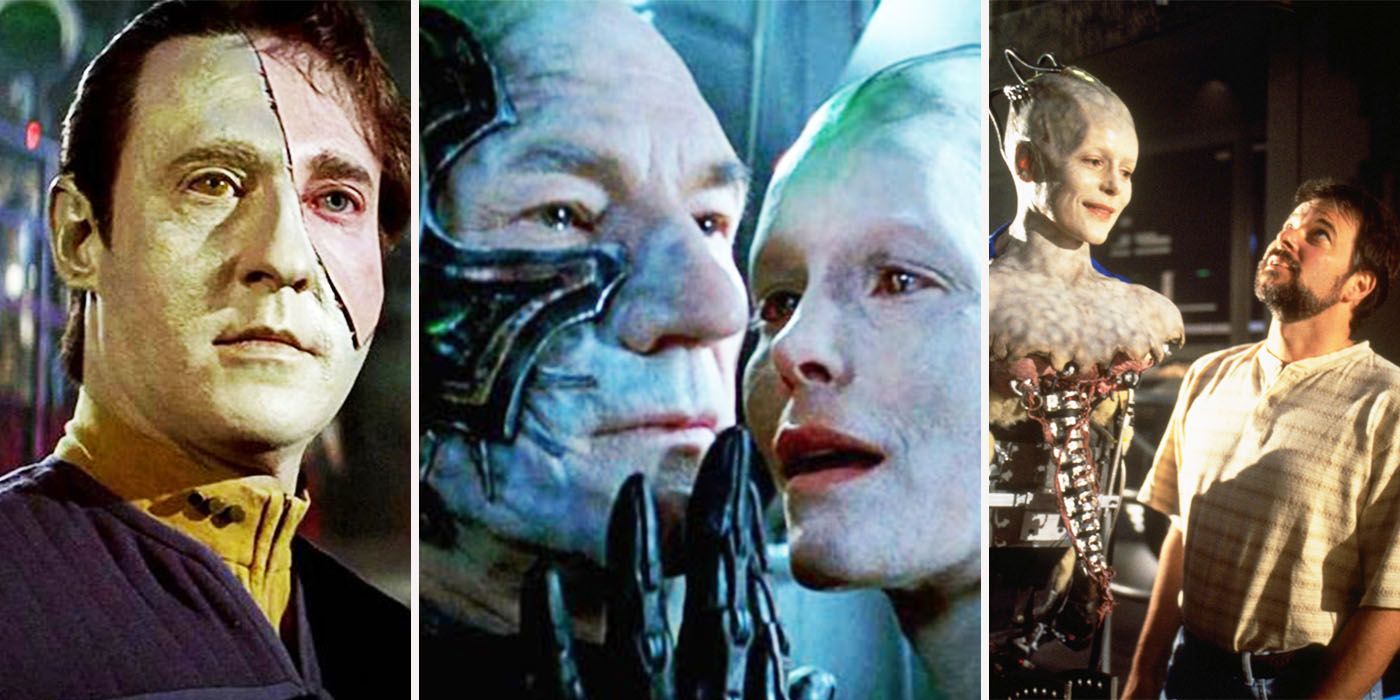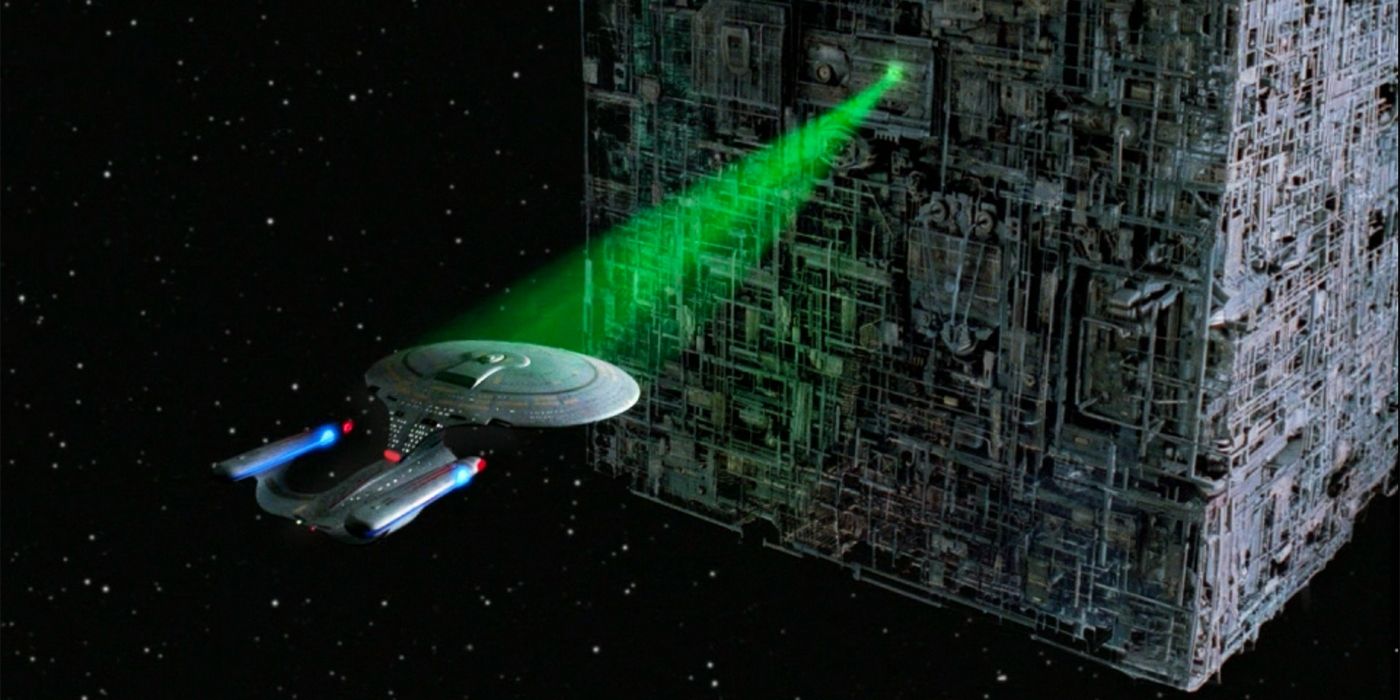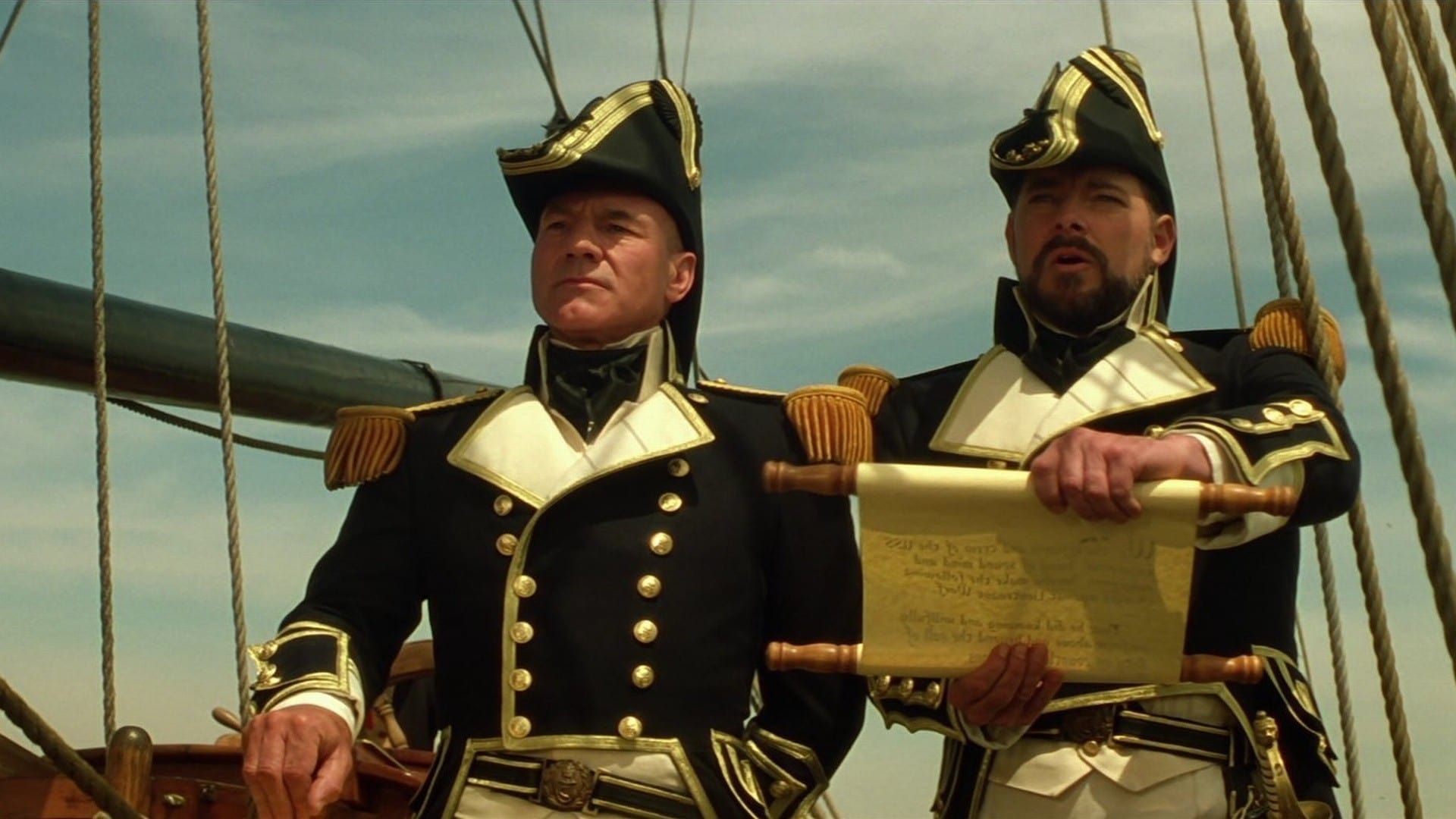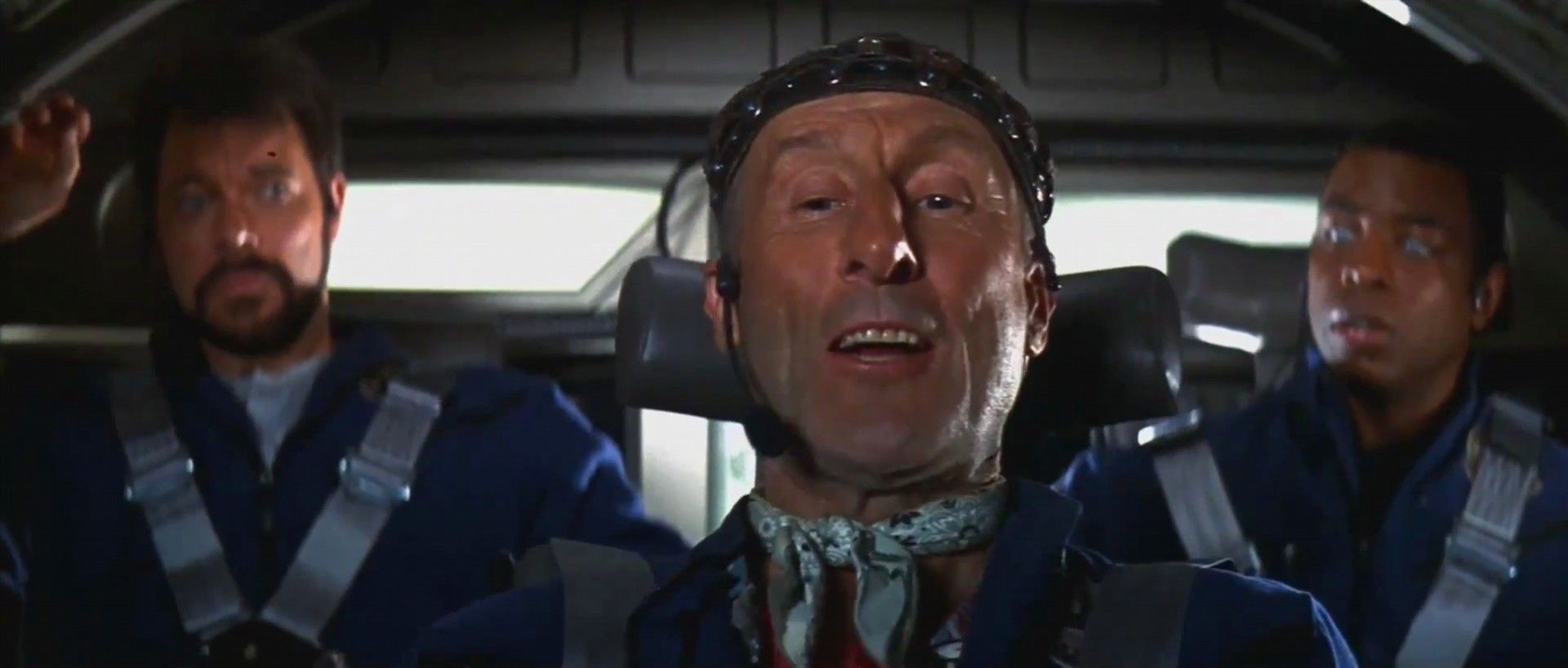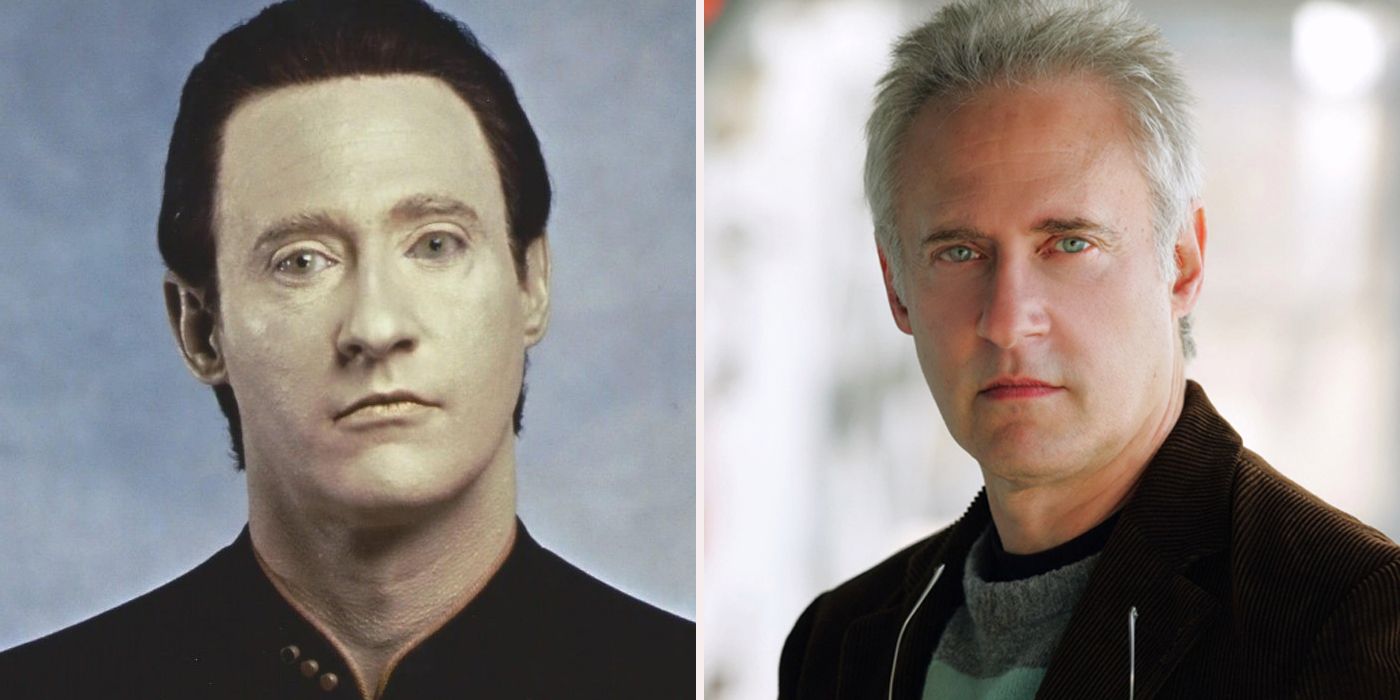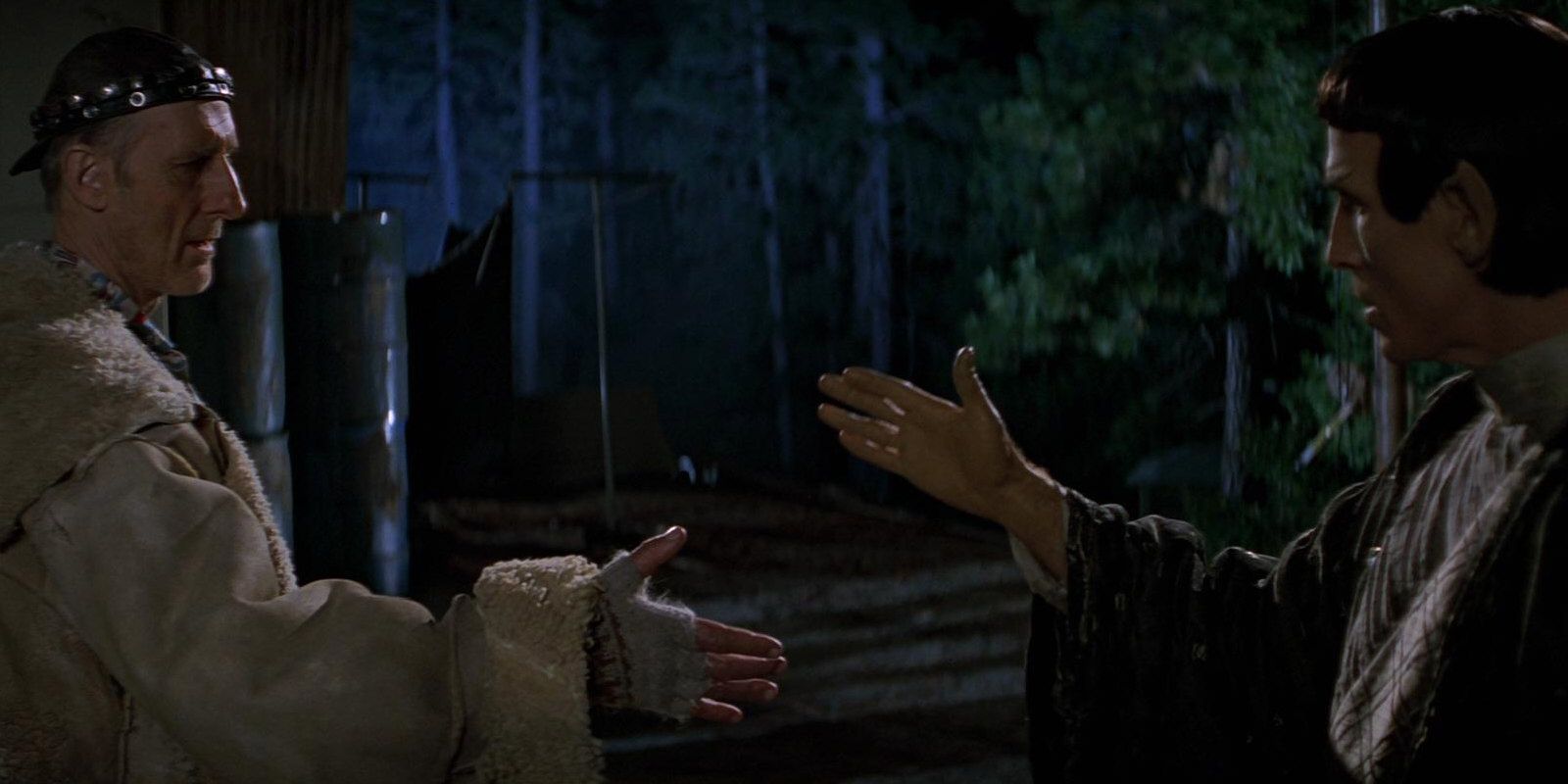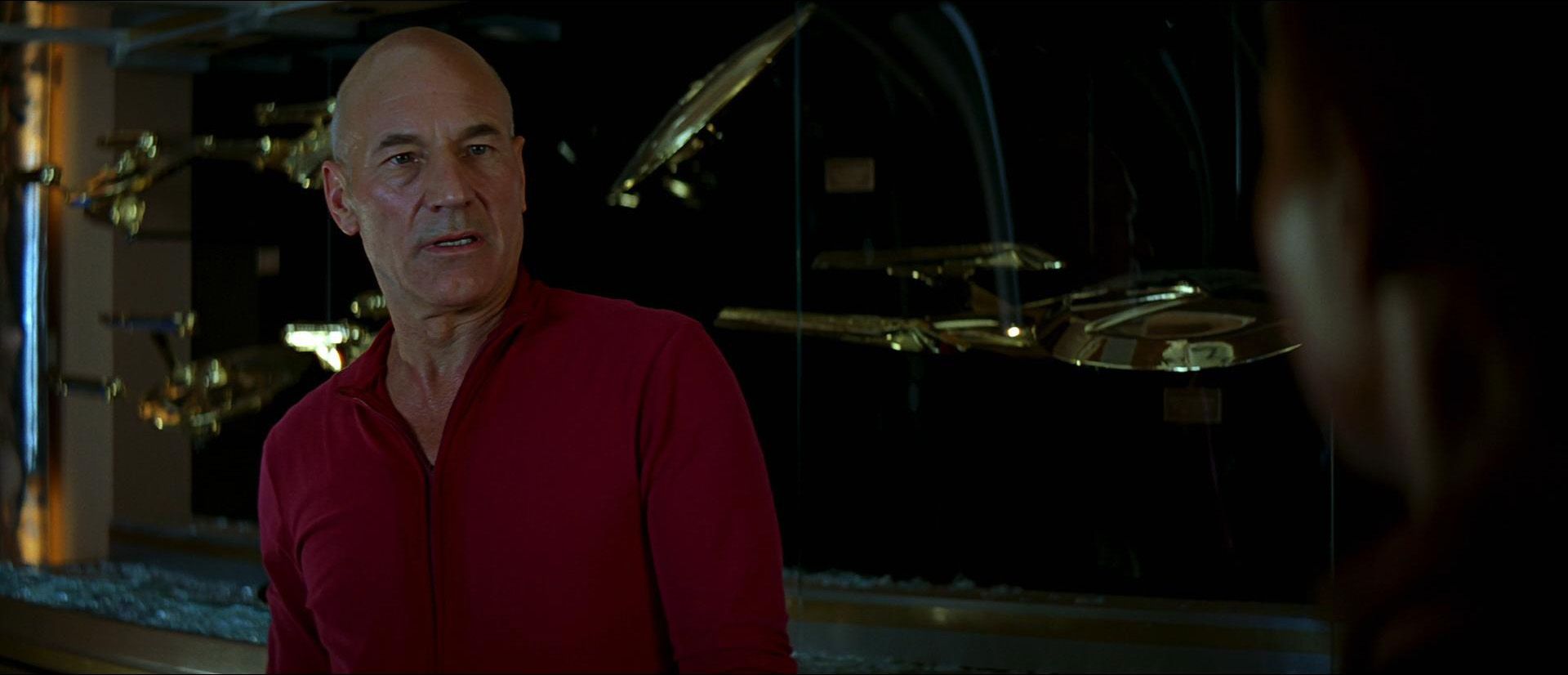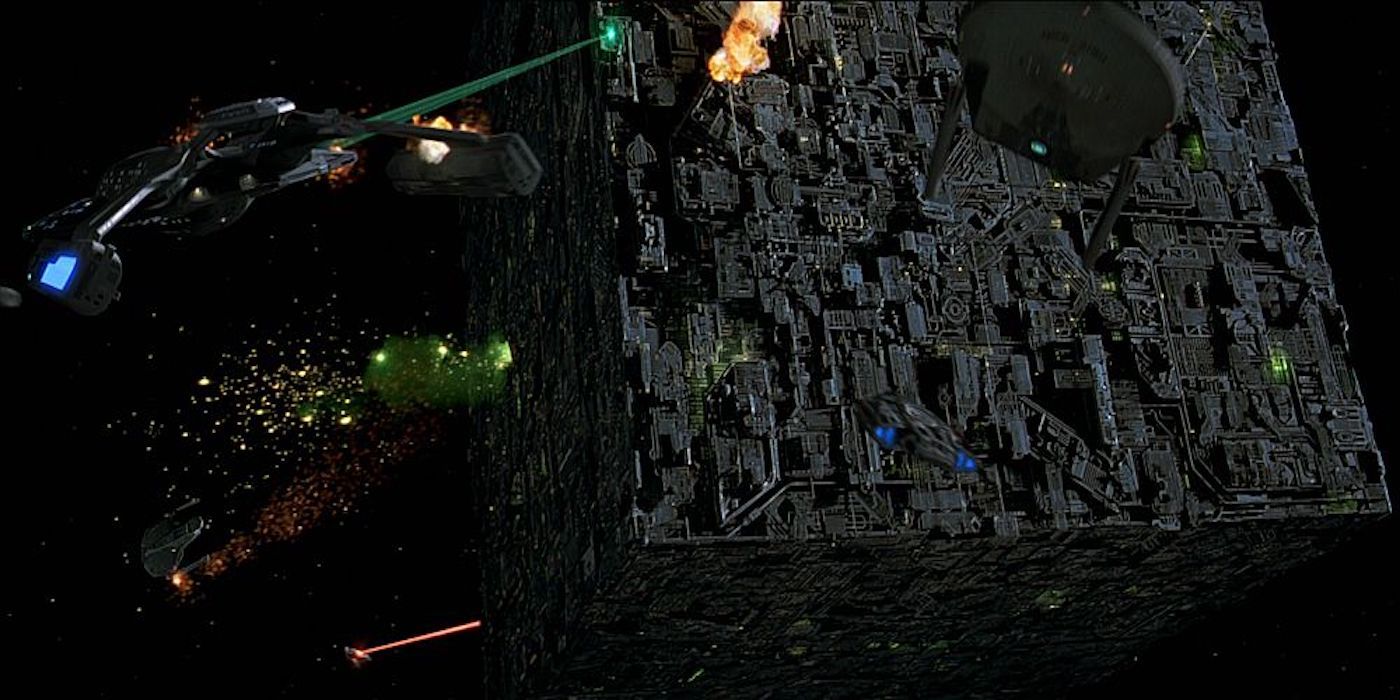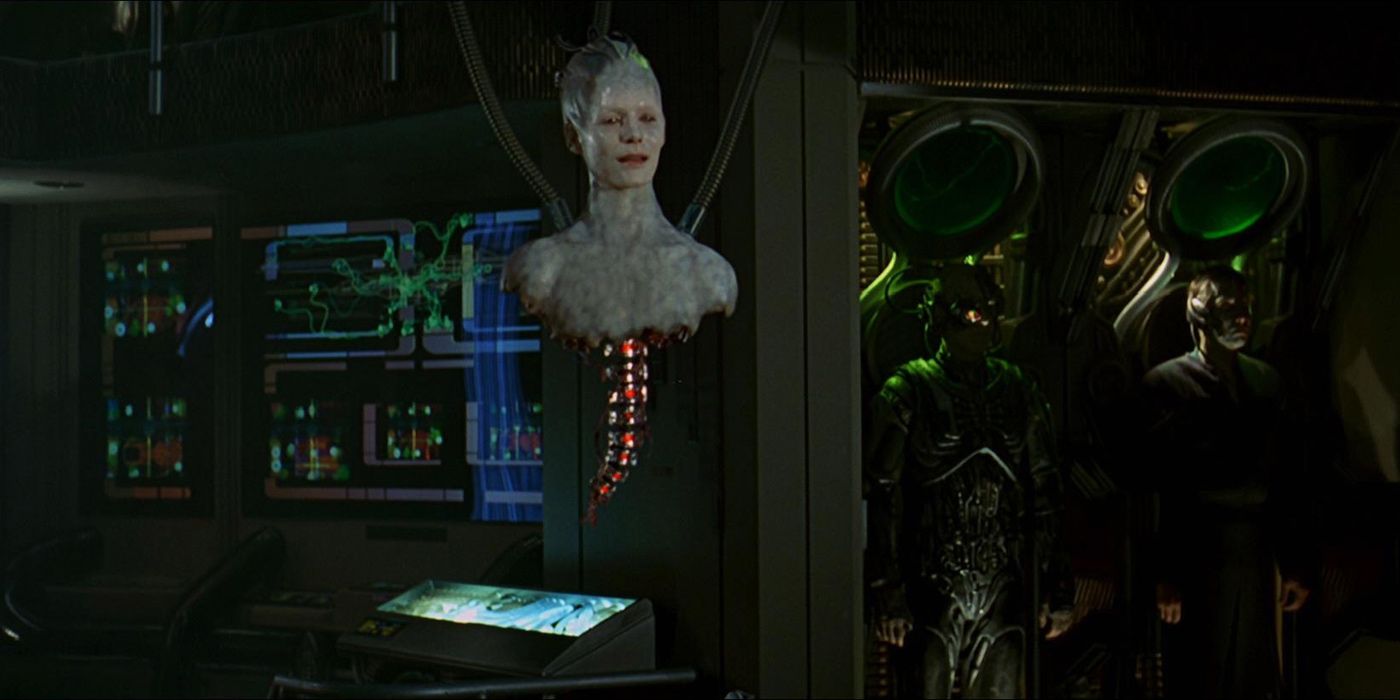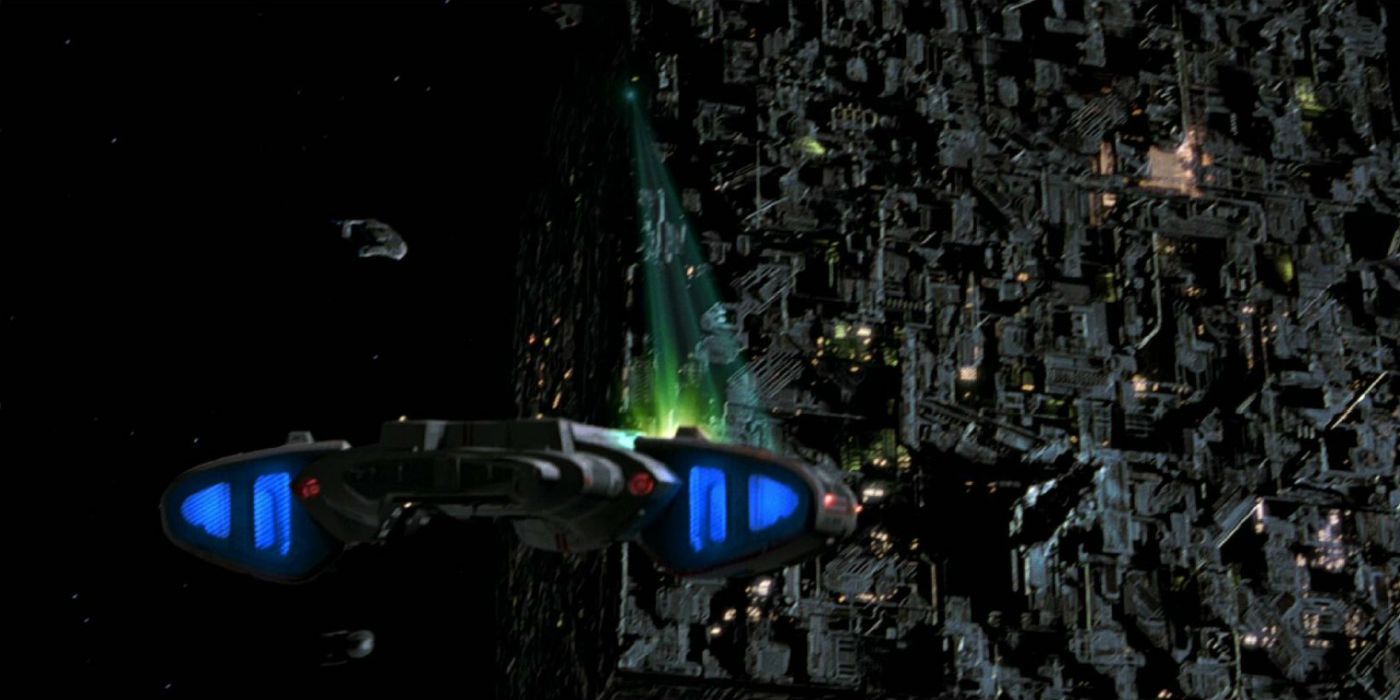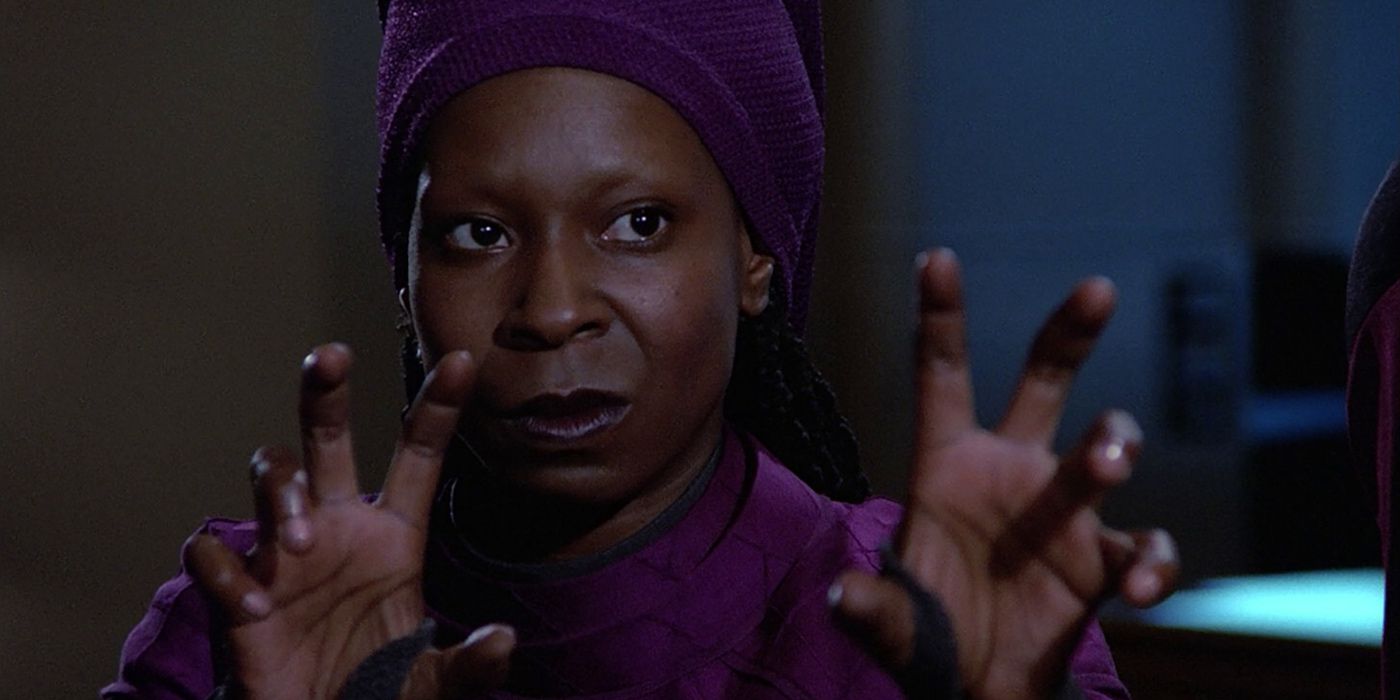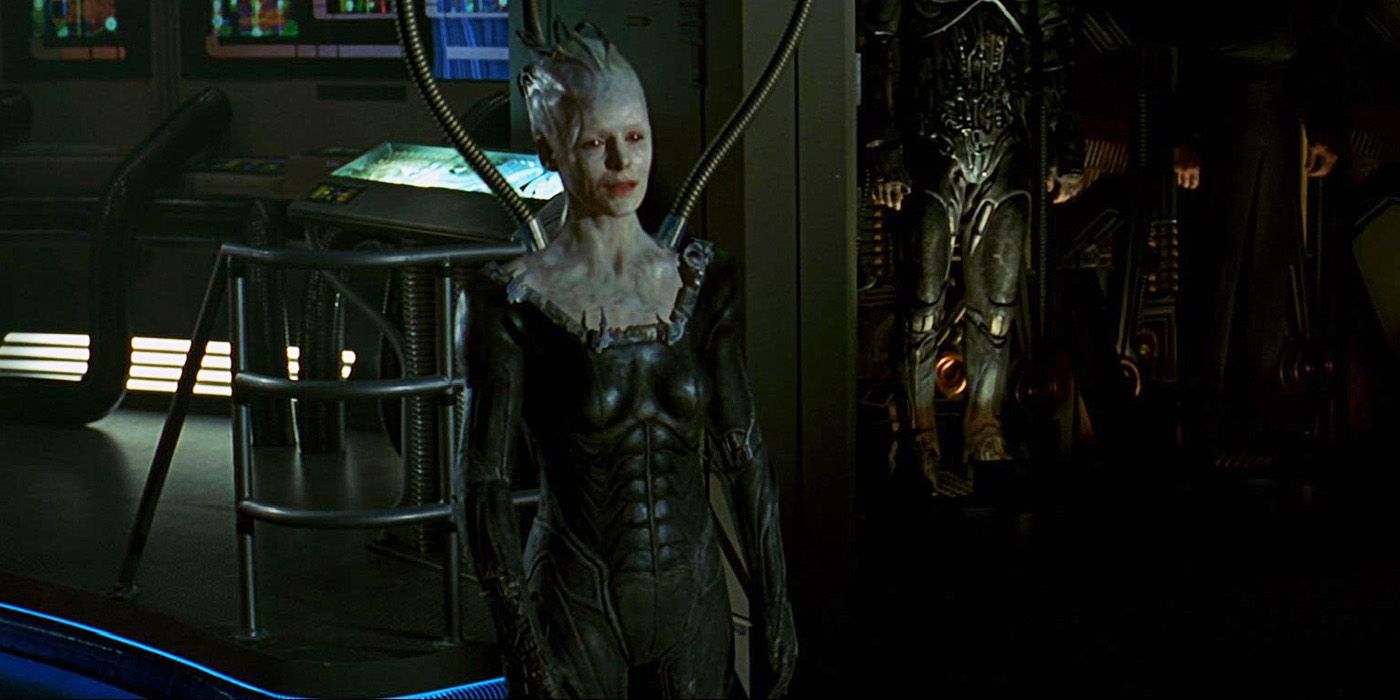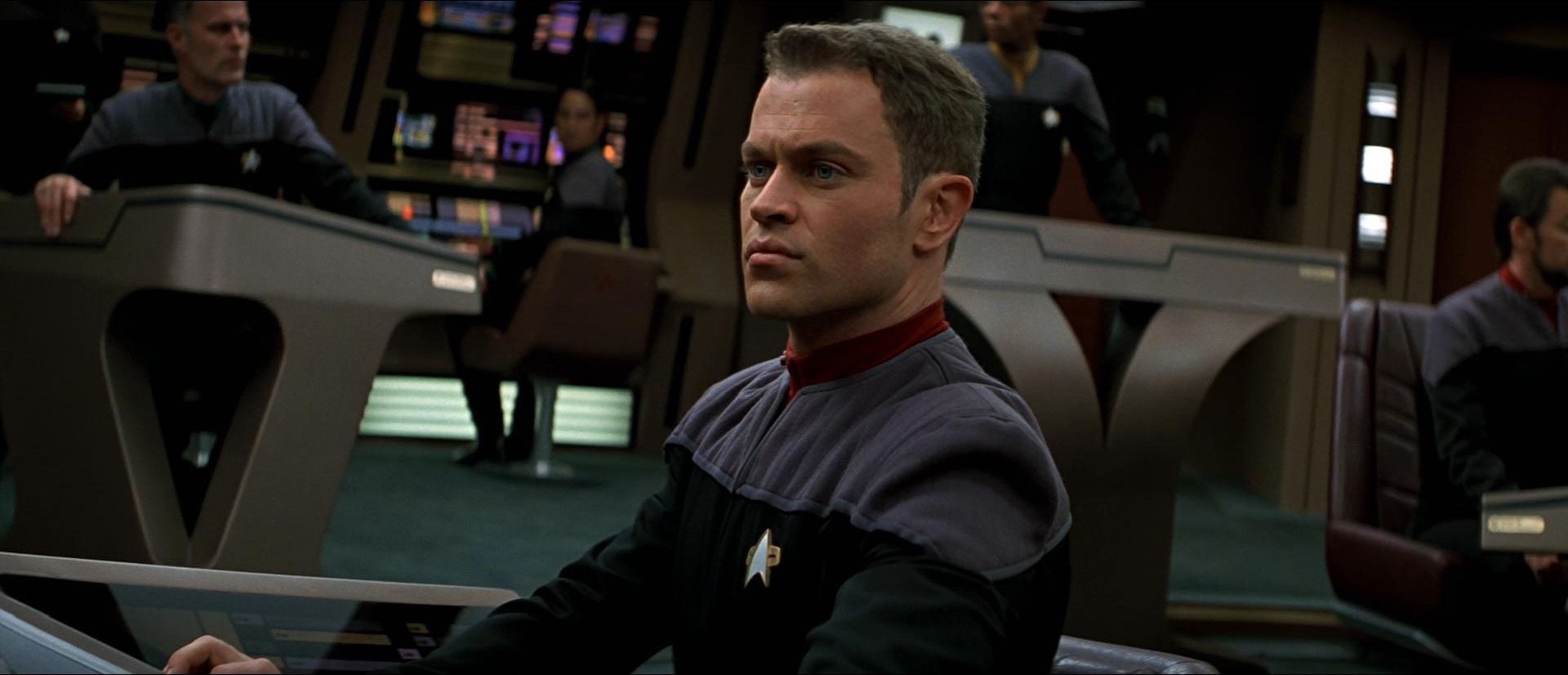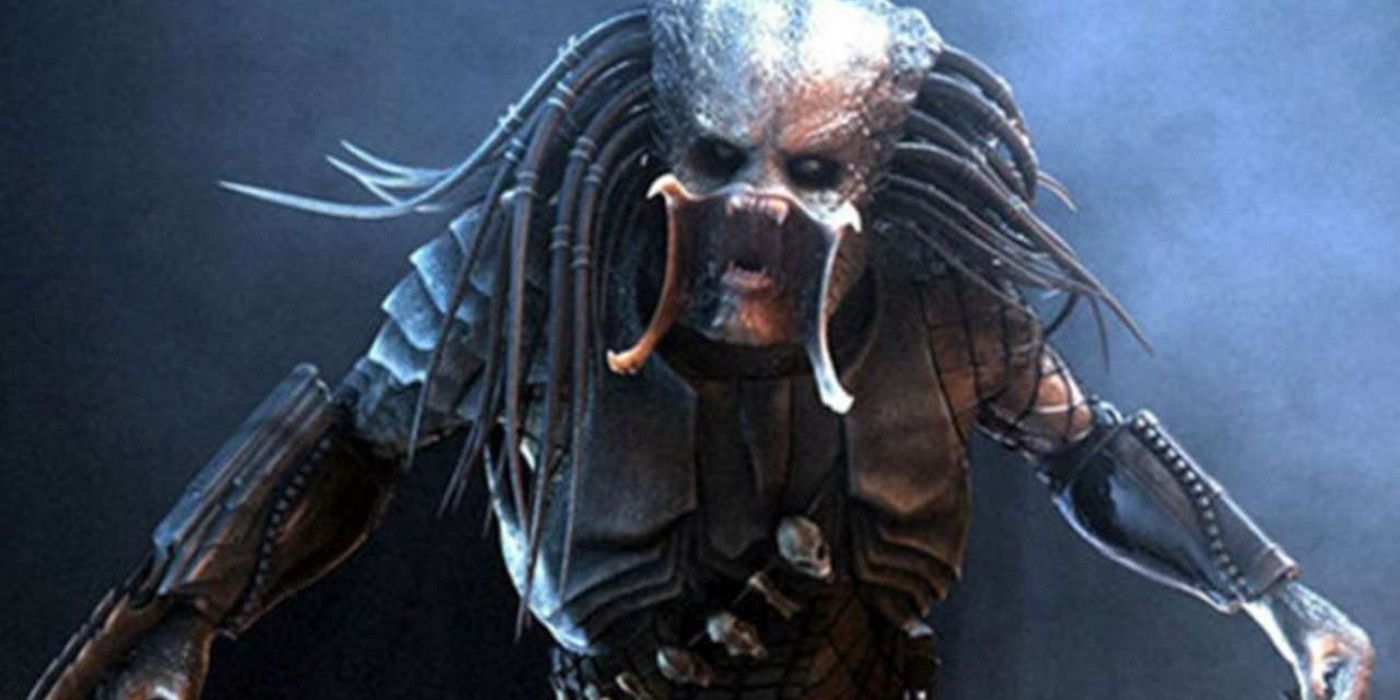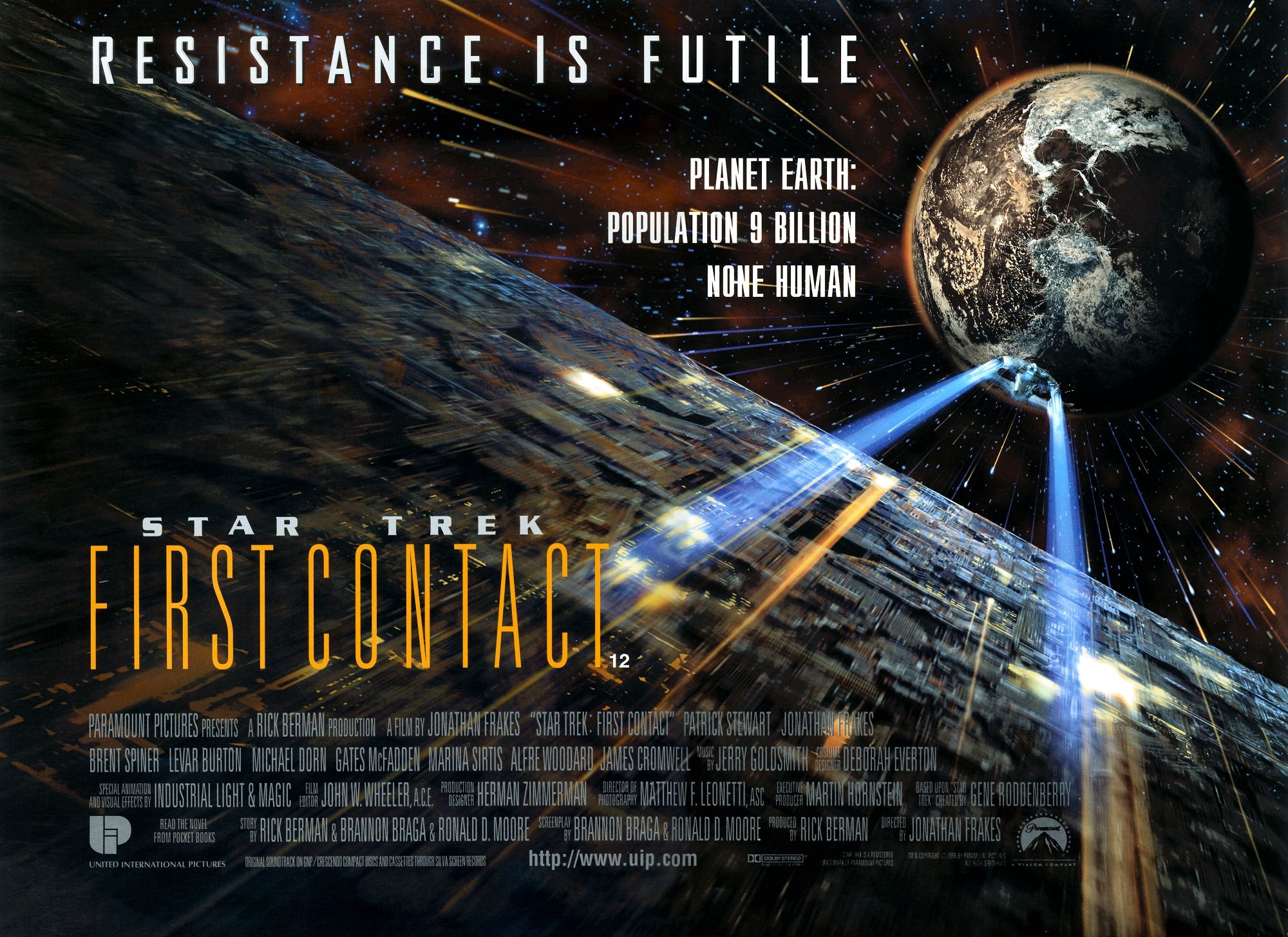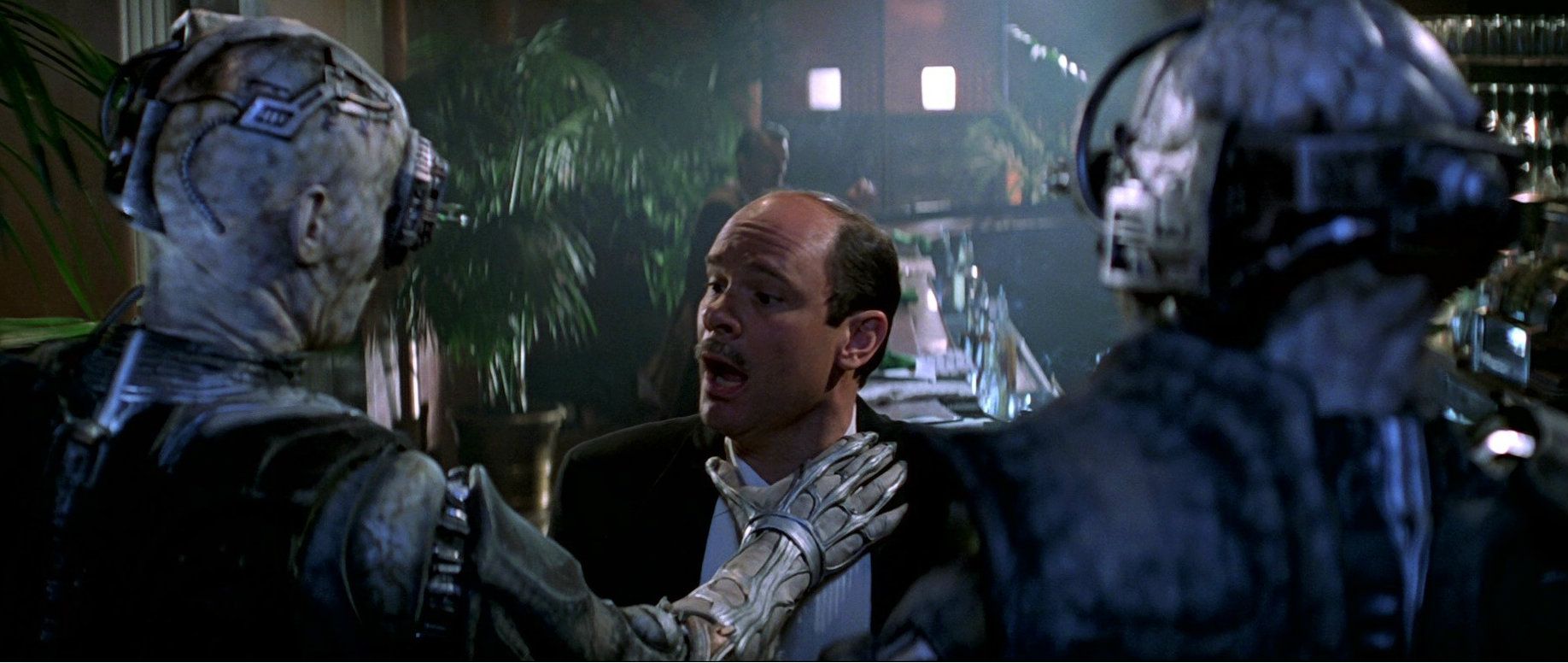After Star Trek: Generations, Paramount and Rick Berman were ready to get the next incarnation of a Star Trek movie with The Next Generation crew developed. The script went through several rewrites until it became Star Trek: First Contact.
The movie is about the crew from The Next Generation traveling back to the middle of the 21st century in order to stop the Borg from taking over Earth by changing its past. The Borg want to stop Zefram Cochrane from creating the warp drive system and testing it; this event initiates first contact with the Vulcans.
First Contact brought new lore to the Star Trek universe, as well as new types of ships and pre-warp technology. It also brought intriguing and shocking things from behind-the-scenes that involved development, actors, and other Star Trek and third party properties.
First Contact is one of the more beloved movies in the Star Trek franchise, scoring just behind the J.J. Abrams reboot at 93% (the reboot is at 94%) as of this writing. With other review aggregator sites, First Contact scores average anywhere from 70% to 80%.
Even with good reviews and scores, First Contact still had controversy as it went from development to filming to release. Here’s 16 Things You Didn’t Know About Star Trek: First Contact.
Borg + Time Travel = First Contact
Months after the release of Generations, Paramount quickly approved development of an eighth Star Trek film. The studio kept Berman on as producer, and he tasked Brannon Braga and Ronald D. Moore with writing the script. Berman wanted a movie about time travel, but hadn’t considered a villain yet.
Braga and Moore thought using the Borg would make a better movie since the Borg hadn't been a main focus since the television series. Another reason the Borg were rarely used was because of budget reasons. Since Paramount had approved a larger budget, it was now possible to include the unique and fan-popular race.
Strangely enough, the two ideas remained separate in the very early stages of script development.
Star Trek: Renaissance
The time travel and the Borg ideas intrigued producer Berman and writers Braga and Moore, so the two concepts were combined. The first draft the eighth movie was called Star Trek: Renaissance, since it took place during the Renaissance period. In it, the Borg maintained their collective in a castle dungeon. From these headquarters, they planned to disrupt humanity’s exploration and scientific discovery.
When ideas were brainstormed for this first script, sword fights were planned. Another storyline had Data becoming Leonardo da Vinci’s apprentice. But Berman and the writers, as they generated concepts, felt the movie was becoming “too kitsch.”
They wanted to keep both ideas, knowing there were good, basic concepts there. Thus, they moved the time frame up to 2063, when Zefram Cochrane would usher in the age of the warp drive.
Tom Hanks almost played Zefram Cochrane
The character of Zefram Cochrane was played by two actors (and possibly a third). In the Original Series, Cochrane was played by Glenn Corbett in the episode “Metamorphosis”. James Cromwell played the scientist in First Contact, and also appeared in the Star Trek: Enterprise episode “Broken Arrow”. For that episode, footage from First Contact was used. Other scenes were shot with an actor dressed the same, but his face was never shown.
It didn’t matter to the writers that Corbett and Cromwell played Cochrane vastly different.
In First Contact, Zefram was a cynical drunk at first, eventually changed by the interactions with the Star Trek crew. Tom Hanks, a huge Star Trek fan, almost played the part of Zefram Cochrane, but he had already committed to the movie That Thing You Do!
13. Data's aging skin
No one can stop natural aging - not even an amazing actor like Brent Spiner. As fans, we want people like Spiner to continue acting forever, but it’s just not possible, right?
This especially affects franchises where characters sometimes need to stay around a certain age, or characters that have no aging capabilities, like Data.
An idea was generated that dealt with Spiner’s aging, because was getting harder and harder to continuously keep Data looking the same movie after movie, especially when there were years between subsequent movies.
The storyline would have the Borg completely remove Data’s skin.
This would allow the producers to either replace the skin with aged skin or replace Spiner with a new, younger actor. No one was keen on that idea, so it was removed.
Patrick Stewart refused to wear tights
The first idea, titled Star Trek: Renaissance, was in development for some time. Writers introduced a concept in that script that had the Borg assimilating themselves in the period costumes of that time.
Screenwriter Ronald D. Moore was starting to get worried that the movie was bordering on “campy” and “over-the-top.” Because of his creative input on Generations, Patrick Stewart was asked his opinion. Stewart didn’t really have much to say about the main story or the sub-plots of Renaissance except for one major, selfish criticism.
Stewart was not fond of the Renaissance story because he’d have to wear tights!
This was something he refused to do. Of course, it wasn't the sole reason, but the Renaissance idea was eventually scrapped in favor of the first meeting between Vulcans and humans.
Picard and Riker swapped roles
After the idea of taking the crew back to the Renaissance period was thrown out, producers and writers eventually began working on the combination Borg and time travel plot. Initially called Star Trek: Resurrection, the first draft of the new script was backwards from the final product that hit theaters.
The Borg still traveled back to Zefram Cochrane to stop the scientist from completing the warp test. The Borg put Cochrane into a coma, leaving it up in the air about how warp travel would progress. Instead of Riker remaining on Earth to assist Cochrane, Picard was written to replace Cochrane. Picard would continue the research of the warp drive.
Brannon Braga felt this didn’t make sense: Picard had the most experience with the Borg, but they couldn’t use it. Braga had the roles of Picard and Riker swapped and had the Earth-side story retold differently.
The Millennium Falcon
Industrial Light and Magic, or ILM, as it’s commonly known, is a powerhouse in creating visual special effects for TV shows and movies. The company was created to provide effects for Star Wars, but eventually branched out to other studios and franchises, including Star Trek.
For First Contact, ILM created a number of new classes of Federation starships. New classes included Akira, Steamrunner, and Sabre.
Because ILM was a Lucasfilm, LTD company, the special effects people put in a fun nod to Star Wars.
In a quick scene during the battle with the Borg, ILM inserted the Millennium Falcon in the background.
It’s a little more than a speck behind one of the Akira starships, but you can make out the Falcon’s shape as it swings by the Borg cube.
Q was cut
In creating the second draft of the script, Berman and the writers added a storyline to bring back Q, played by John de Lancie. Just like many fans, Paramount liked de Lancie. The studio also liked the time travel concept and so approved a $45 million budget. This amount was $10 million more than the previous Star Trek movie, Generations.
The increased amount allowed production to use more CGI ships and make space battle scenes more intricate and longer. Whether the writers felt adding Q convoluted the plot, or it wasn’t necessary to include the omnipotent character, Q never made it to the final script. It was probably just as well: Q may have been used as a convenient way to propel the story.
The Borg Queen was almost just a computer
The Borg Queen is one of the more memorable characters from a Star Trek movie. Not because she was a Borg - easily one of the best adversaries from any Star Trek show or movie - but because Alice Krige brought a sexuality to the Borg race previously unseen. She played the Queen with humanity, giving the crew of the Enterprise a unique challenge to overcome her plans.
The Borg Queen almost never became a character.
Originally, the producers and writers conceived of an idea that the Enterprise-D would go against the Borg’s main computer. However, the writers were having a hard time writing and settling on believable and sensible dialog for the computer. To fix this problem, they scrapped the Borg Computer and created the Borg Queen.
The Deep Space Nine Connection
The U.S.S. Defiant was built as a prototype warship to help in the fight with the Borg, but the ship failed tests and was retired and stored. In later seasons of DS9, Benjamin Sisko requested the ship for DS9 to provide a presence against the Dominion threat.
Since First Contact was essentially set around the same time as DS9, having the Defiant in the movie wasn’t an issue in terms of continuity. In early drafts of the movie, the Defiant was originally going to be destroyed. But screenwriter Ronald D. Moore said they didn’t need to; it would be unnecessary.
Moore’s reasoning was that First Contact didn’t involve any characters from the DS9 show (besides Worf), and it would make writing additional episodes of DS9 very “inconvenient.” Because of Moore, the Defiant survived.
No one told Whoopi she wouldn't be in the movie
Whoopi Goldberg played Guinan, the wise bartender in Ten Forward on the Enterprise-D. Both the actor and the character were fan favorites, so when it was revealed that Goldberg would not be in First Contact, it confused fans and the media. And Goldberg.
Guinan’s race, El-Aurian, had been dispersed by the Borg some time ago. First Contact focused on the Borg, so it made sense Guinan would have some kind of role. But unfortunately, Guinan wasn’t involved.
On Guinan’s absence, Ronald D. Moore said, “We decided fairly early on that Guinan wouldn’t be in the movie because she wasn’t part of our storyline and we didn’t want to shoehorn the character in.” Goldberg was never told directly; she found out through newspapers she wouldn’t be in First Contact. She said, “I didn’t think you could do anything about the Borg without my character, but apparently you can.”
The Borg Queen's painful Costume
Star Trek is known for its unique aliens and the complicated make-up process in getting actors ready for their extraterrestrial roles. For Klingon characters, actors have stated that it takes an average of 2-3 hours to apply the makeup. In First Contact, the Borg Queen costume looked stunning on Alice Krige but caused complications during filming.
Krige wore prosthetics for the role.
While she said she couldn’t imagine playing the Borg Queen any other way, she remained uncomfortable for most of the filming. The costume was so tight that it caused blisters, and she wore special, mirrored contacts that allowed her to see out, but no one could see in. The contacts were so painful to wear, Krige could only have them in for about 4 minutes at a time.
Hawk was shoved back in the closet
Star Trek: Discovery has the first openly gay Star Trek characters on screen: Paul Stamets and Dr. Hugh Culber. First Contact almost beat the show by nearly 20 years in having that distinction.
Written into the early drafts of First Contact, the character of Lieutenant Hawk was openly gay. Hawk was played by Neal McDonough. As the script developed, any references to Hawk's orientation was removed, so there is no reference in the movie. Producers have never stated that Lieutenant Hawk had been planned to be written as gay, but Neal McDonough has denied it.
After the movie, Hawk was confirmed gay in the Star Trek novel Section 31: Rogue. The character has appeared in other novels, with vague references to his orientation.
Ridley Scott and John McTiernan almost directed
Although Jonathan Frakes ultimately ended up as the director for First Contact, he wasn’t the only choice Paramount or the producers wanted. Ridley Scott (Alien, Blade Runner, Gladiator) was asked to direct, but he turned to the job.
Another director, whose credits included high-concept action movies, had been asked. It’s unsure if John McTiernan knew Star Trek, but producers must have wanted more action in First Contact so they gave the choice to the Predator, Die Hard, and The Hunt For Red October director a shot. McTiernan declined.
Patrick Stewart asked a third, well-known director, but after speaking with him, Stewart found the director didn’t have enough Star Trek knowledge. Because of Frakes’ experience with directing TNG episodes, he was given the job.
Other Titles Considered
Like many Star Trek movies before it, First Contact went through numerous title changes before finalized as the one that reached theaters. With early development scripts, when the plot involved traveling back to Leonardo da Vinci’s time, the movie was called Star Trek: Renaissance. When the story shifted to the Borg stopping Zefram Cochrane from conducting his warp tests, the movie was called Star Trek: Resurrection.
The title didn’t stick very long: when Fox announced the fourth movie in the Alien film franchise, also called Resurrection, Paramount nixed the Star Trek title.
Other titles that were considered were Star Trek: Borg, Star Trek: Destinies, Star Trek: Future Generations, and Star Trek: Generations II. Since the movie takes place around the moment the Vulcans first contacted humans, the movie was eventually renamed First Contact.
Notable Cameos
A number of actors from other Star Trek shows made their appearance as cameos in First Contact. Ethan Phillips, who played Neelix on Star Trek: Voyager, had the role of a maitre d' in the night club scene on the holodeck.
Dwight Schultz reprised his character Lieutenant Reginald Barclay, but when Schultz got to the set, he couldn’t find his way around and became lost. He was already three hours late, and a movie crew member had to go find him and bring him to the set.
Robert Picardo brought his Emergency Medical Hologram part to First Contact. It was the first time he wore the gray and black uniform.
Screenwriter Brannon Braga was in the background of the night club scene. Also in that scene was Michael Zaslow (as a bartender), who played Darnell in the episode “The Man Trap” in The Original Series. His part was uncredited.
What are your thoughts on Star Trek: First Contact? Let us know in the comments!

